

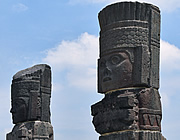
Tula is famous for the impressive Atlantean statues which stand high on a pyramid, but there is also some fantastic relief carving here, especially on the Wall of Serpents!
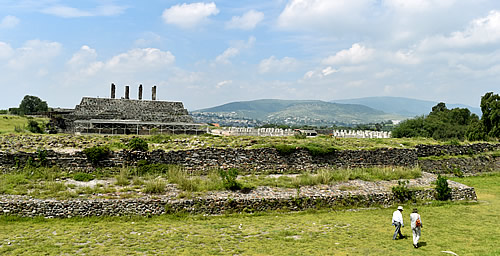
Tula is a Toltec city. It is also known as "Tollan" meaning "Place of the Rushes" or "civilised urban space".1 An alternative derivation is that it is an Aztec name given to a people who inhabited the region before the Aztecs arrived. Here it means "artisans" because the Toltecs were very good with their hands as craftsmen and builders.
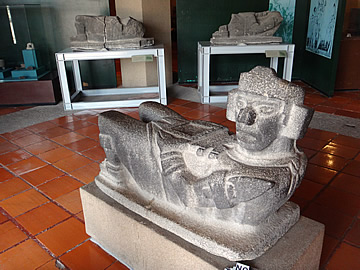
80km north west of Mexico CIty in the state of Hidalgo, this Toltec stronghold reached its peak between AD 950 - 1150, the early post-classic era, though there had been settlements here for centuries beforehand. The city was huge, covering 16 sq. km with a population between 30000 and 40000. Tula Grande was built in this period, with streets aligned 17 degrees east of north, similar to Teotihuacan. Previously the alignment was due north so building the new city involved demolishing at least part of the previous Tula Chico and starting from scratch.
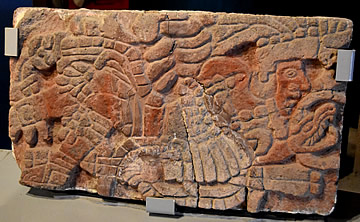
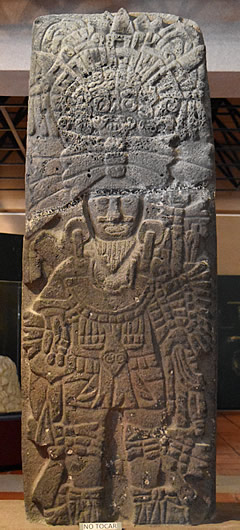
We began our visit in the small on-site museum.
The chacmool is one of many indications of Toltec influence in mesoamerica. Another is the prevalence of the Toltec cult of Quetzalcoatl, the feathered serpent.
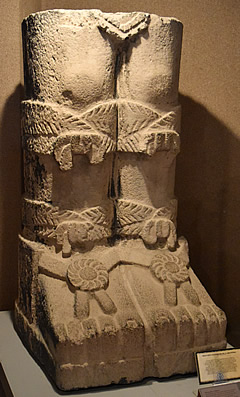
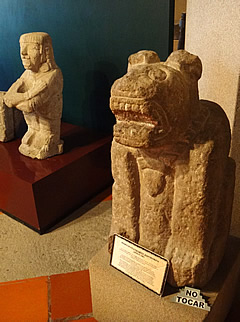
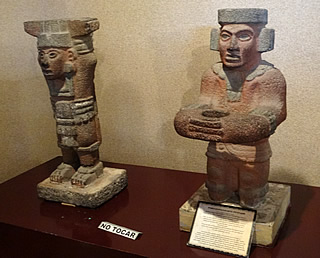
Leaving the museum we walked through an extensive cacii garden, this being a desert region they do very well here! Many of the cacti and succulents were in bloom with vividly coloured flowers.
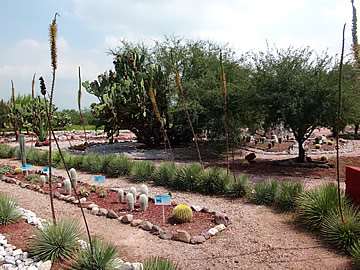
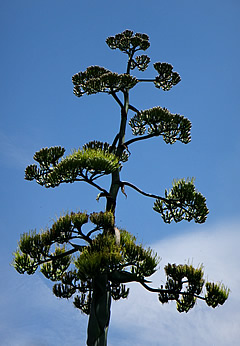
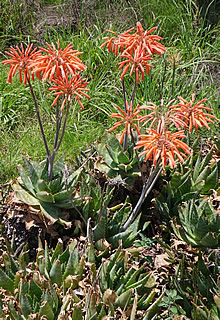
As we walked towards the site our guide, Pepe, told us a version of the legend of the beginning of the cult of Quetzalcoatl. The story goes that a tribal leader chose this as the location of his settlement after seeing a goddess here. He was so afraid he fired arrows at her which she stopped with her hand. He married the goddess and they had a son and was then killed in battle against a tribe which worshipped the feathered serpent. To avenge his father the son attacked the rival tribe. killing their leader. His people were so impressed they added the name "Quetzalcoatl" to his own name and the cult of Quetzalcoatl became established. Quetzalcoatl left the settlement to conquer new territories, promising to return. When Cortes and his men arrived, wearing feathers in their helmets, Moctezuma thought it was the god Quetzalcoatl come home.
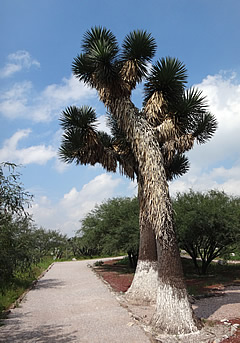
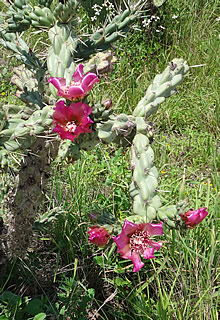
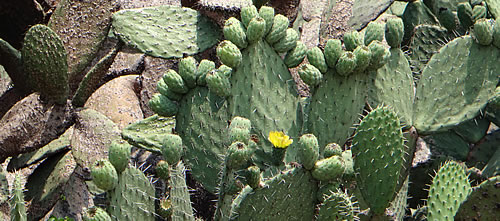
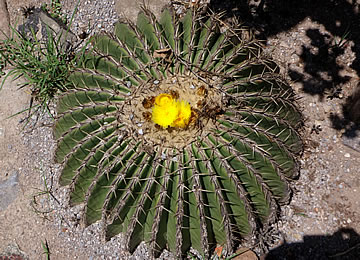
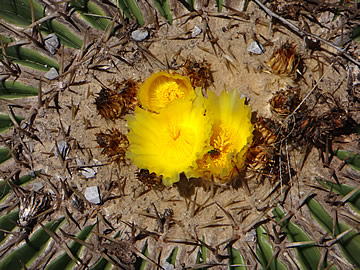
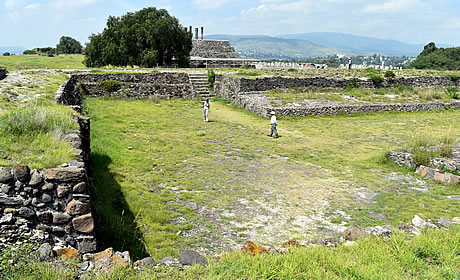
Approaching the site from the north we first arrived at an I-shaped ball court just outside the ceremonial area. The I-shape is thought to have been first used at Xochicalco and thereafter at many other sites.
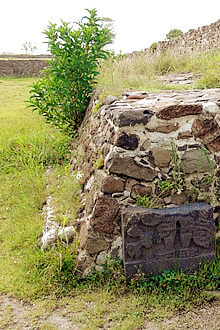
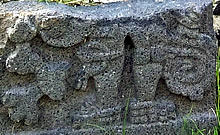
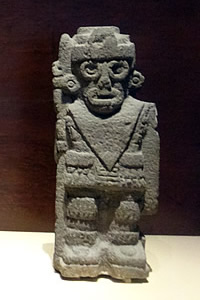
The information board at the site describes a figure of a warrior found at Ball Court 1, dressed in garments characteristic of the storm god Tlaloc who was associated with royal dynasties. Niches on the structures at the ends of the playing area could have held statues of the patron gods of the ball game.
The walls of the court were once covered with stone slabs with relief carvings but only one small fragment remains - the Aztecs revered the people of Tula for their skills and removed practically everything they could take!

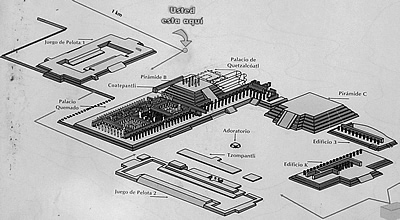
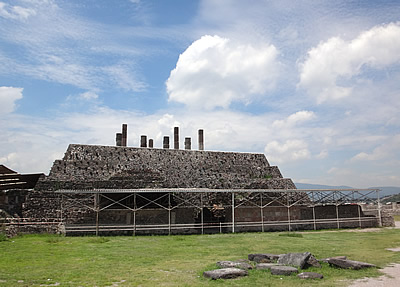
Tula today is essentially the civic and religious centre. Grouped around a large Grand Plaza are an unexplored pyramid on the east side, a large unexplored ball court on the west, and a platform with pillars on top on the south side. It is the northern area that is of most interest, however. Here lie the pyramid known as Pyramid B, on top of which the famous giant Atlantean figures stand. No less impressive is the carving at the base of the pyramid and a series of colonnaded halls to the west of Pyramid B known as the Burnt Palace.
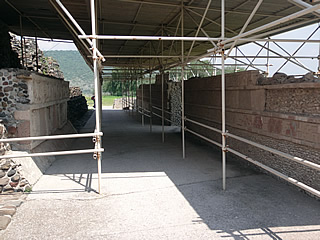
We moved on from Ball Court 1 to look at the magnificent relief carvings at the base of Pyramid B and on a wall, El Coatepantli, on its north side.
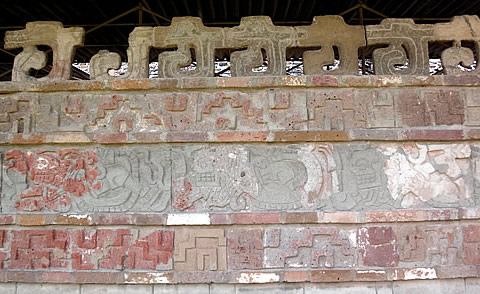
The wall is called El Coatepantli - the Muro de Serpientes or wall of serpents. It is carved with reliefs showing human skeletons being devoured by enormous rattlesnakes - imagery related to human sacrifice and also perhaps resurrection - life and death.
The information board here says that this is yet another element which was copied by the Aztecs and appears in their cities. It is known that for the Mexica these walls determine the boundary of the sacred space and it was probably the same for the Toltecs.
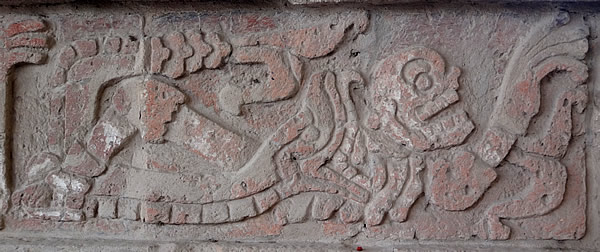
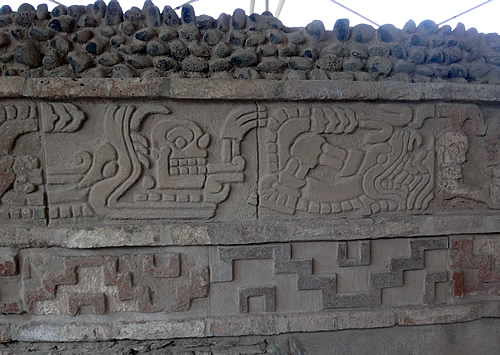
The serpent carvings are in good condition, with quite a bit of colour remaining - it must have looked even more fearsome when the whole wall was a mass of vibrant colour.
Imagine walking down this corridor at night, in flickering torchlight, with the drums beating outside and the sounds of the jungle all around.
A tunnel was discovered beneath the Burnt Palace, running from a river in the western hills to Pyramd B and was used to bring water into Tula.
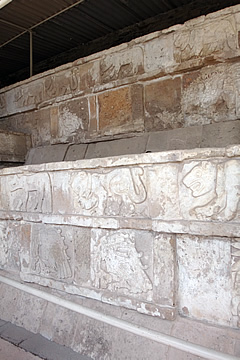
Around the outside of Pyramid B itself are relief carvings of four creatures representing the warrior orders which supported and defended the empire: jaguars, coyotes, eagles eating human hearts and a monstrous composite creature.
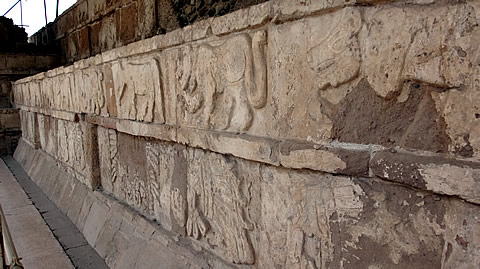
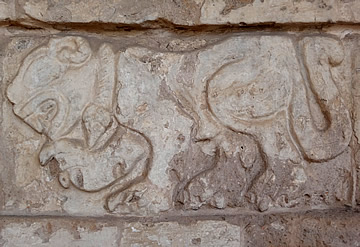
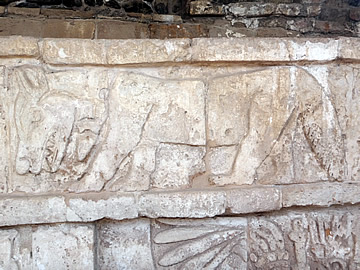
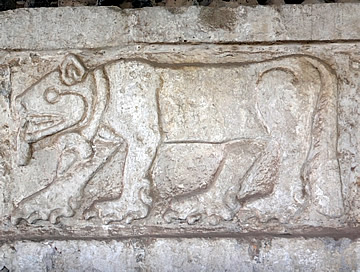
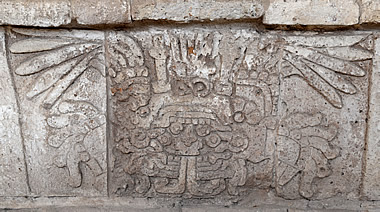
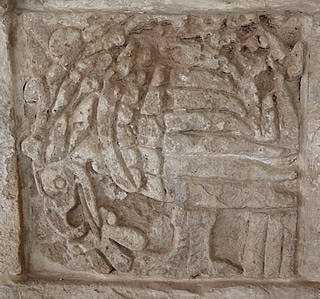
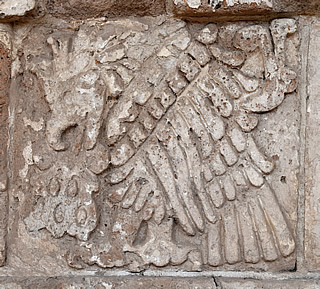
The carvings seem to have been done by many different people, going by the different depictions of the various creatures. The eagles are particularly faithfully rendered, with wing and tail feathers, beak and claws carefully delineated.
The legend of eagles eating sacrificial human hearts and flying to the sun is said to have begun here too.
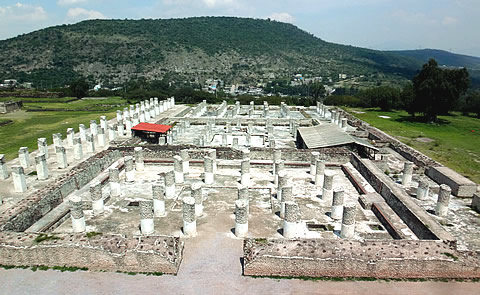
We left the carvings to move on to the "Burnt Palace" - not a palace at all but a series of pillared halls, each with a central shallow depression, as if for a pool. It is probable that these rooms were used for meetings and ceremonies. Around the perimeter are stone benches, and the walls were frescoed.1
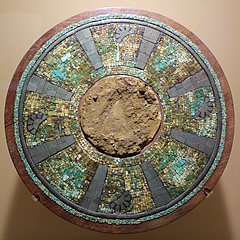
The columns within the east and west halls and outside on the north side are circular - those of the central hall and outside on the south side are rectangular.
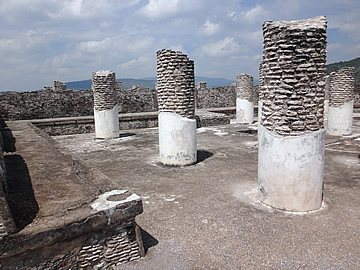
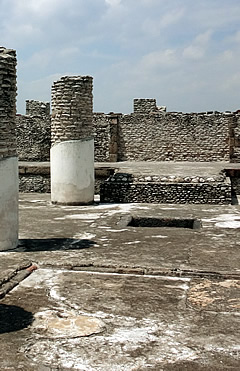
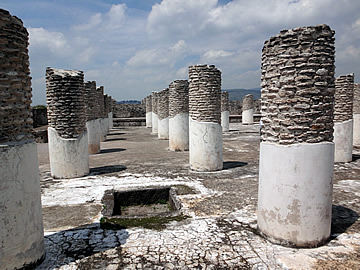
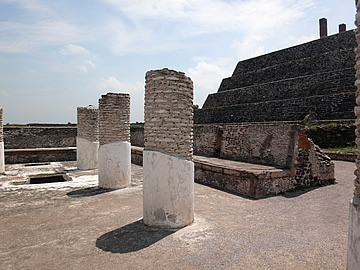
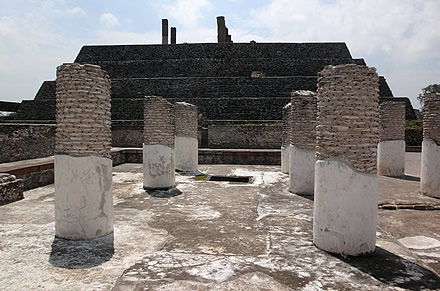
These halls lie west of Pyramid B and both were once fronted to the south by long colonnaded halls on the northern edge of the Grand Plaza.
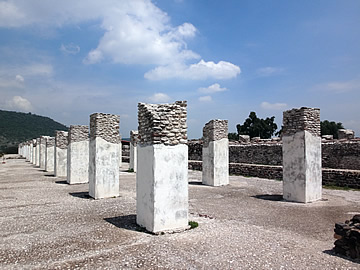
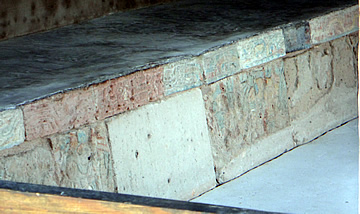
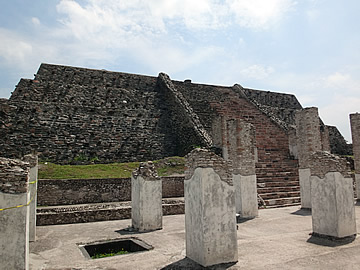
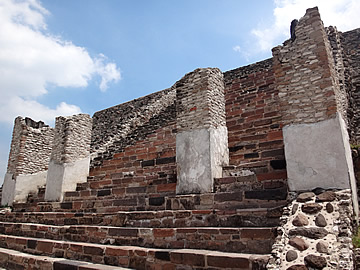
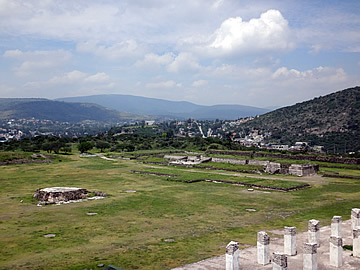
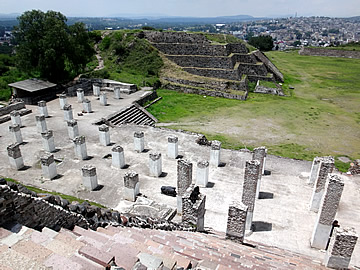
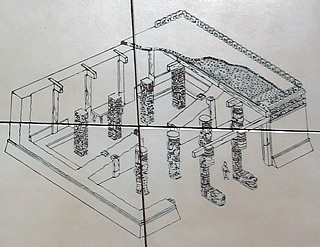
At the top of the steps up the south side of Pyramid B one sees immediately the impressive Atlantes figures. There are four, and they would once have held up the roof of a room. The entrance to the Atlantes room was once supported by two serpents, head down.
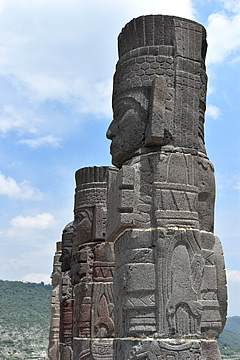
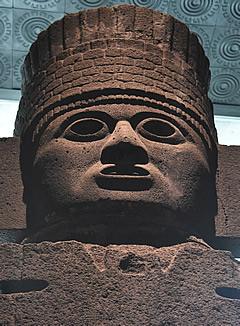
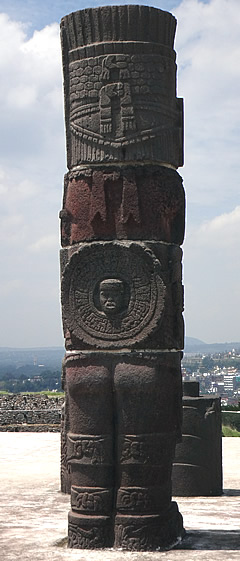
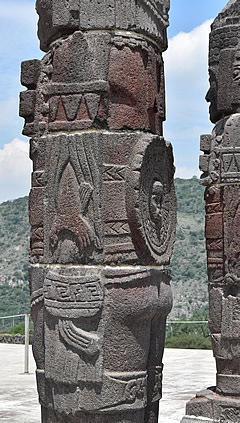
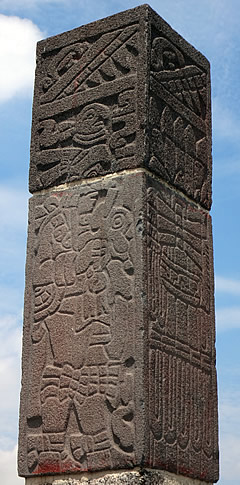
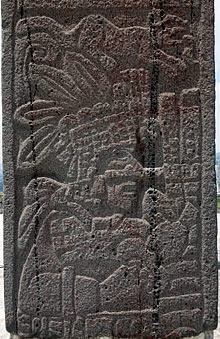
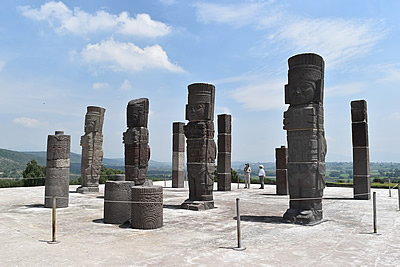
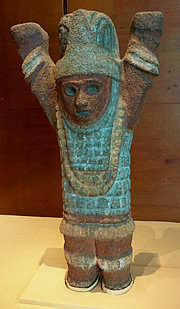
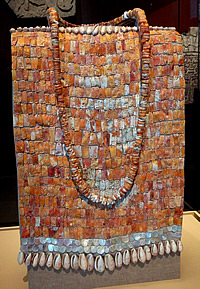
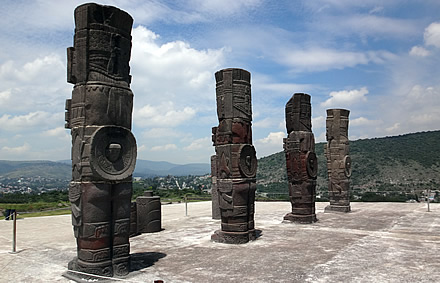
The Atlantes represent the epitome of the Toltec warrior. They carry knives, an atlatl and darts, a curved blade and a pouch for carrying copal - a sacred resinous incense.
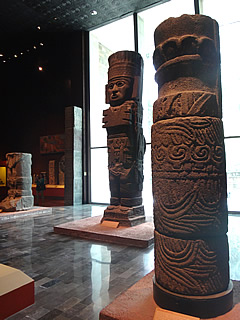
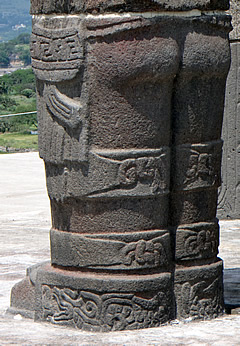
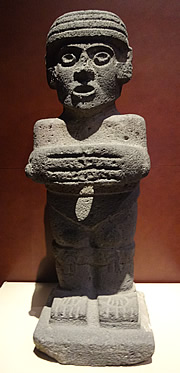
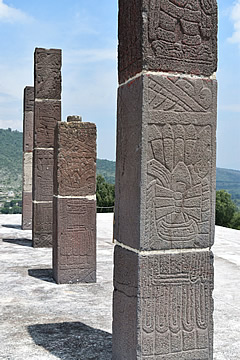
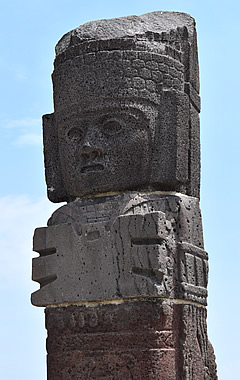
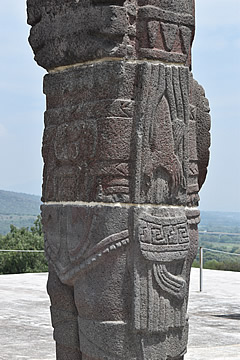
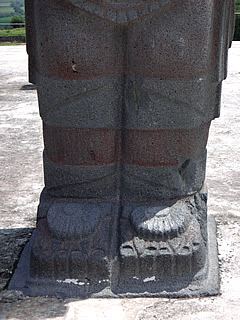
Behind the room of the Atlantes was a second room with four carved square pillars which held up the roof.
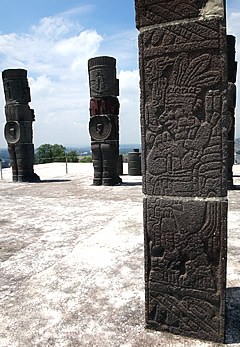
The pillars are carved with figures of Toltec warriors holding atlatls and at least two have the emblems of one of the four warrior castes.
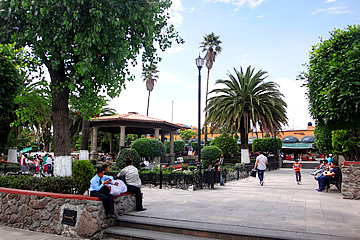
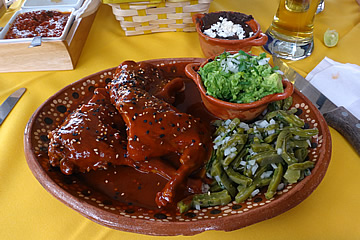
Tepotzotlan, a pueblo magico, in other words one which is thought to offer the visitor a special experience. In Tepotzotlan's case this is for its colonial centre and the Church of San Francisco Javier and the Museo de Virreinato.
We were ready for lunch when we settled down at the end restaurant overlooking the central square, next to the monastery.
Ever keen to try local dishes I had a sopa de tortilla to start: deep fried corn tortilla strips. crumbled cheese, avocado, black chilli, diced deep fried pork skin with a tomato-based broth poured over - really excellent! Then rabbit in a sweet spicy sauce with prickly pear cactus salad, guacamole and refried beans.
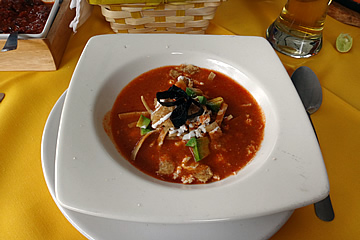
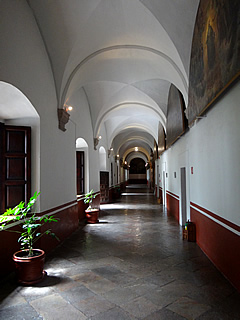
After lunch we went into the museum which is housed in the third school to be established at their monastery - the College of San Francisco Javier.
Built by the Jesuits in the 1580s, the monastery is a peaceful complex of internal courtyards, dormitories, a pharmacy, refectory, kitchen, chapel, cellar, an orchard and extensive gardens.3
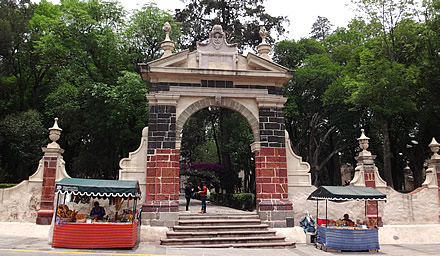
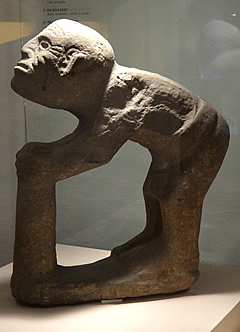 Sculpture of a hunchback.
Sculpture of a hunchback.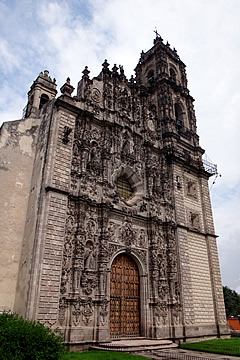
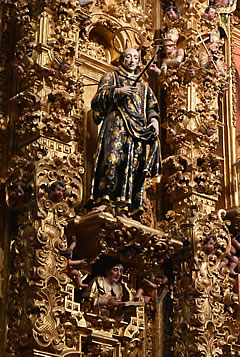
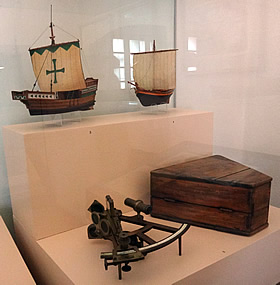
The Jesuits made Tepotzotlan a highly-regarded educational centre. However, this didn't save them from the mass expulsion of Jesuits from Spanish lands in 1767, victims of the desire to remove papal influence from government.
The museum houses many items from colonial times including paintings, sculpture, furniture and tools, though this isn't really our biggest interest, especially not being a big fan of baroque, so we didn't linger.
However, it is essential to visit the seventeenth century Church of San Francisco Javier whose exuberantly Spanish Baroque - known as Churrigueresque - interior dazzles even those of us who don't like the style!
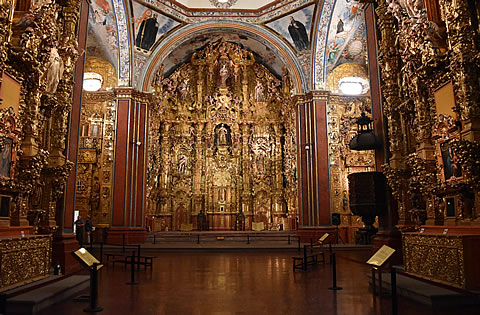
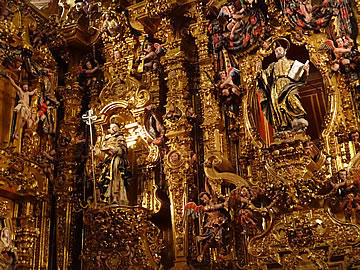
In front of the church is a huge courtyard, large enough, our guide told us, to accommodate all the Indians who came to Mass. Although the service would start at 11 a.m. they were told to come at 10 so that all their names could be taken.
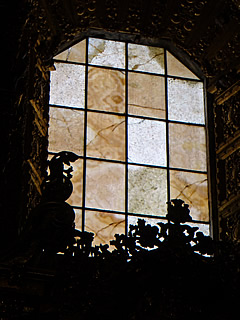
The interior is quite something, smothered in gilded, carved wood. The windows are the original sheets of onyx, they had no glass.
No question, though, that I'd far rather be out exploring a site like Tula than being blinded by fussy baroque!